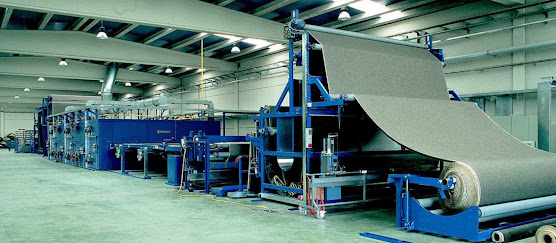In an era marked by growing environmental awareness and a call for sustainable practices, the textile industry has been under scrutiny for its impact on the environment. However, innovations in textile technology, particularly in the development of easy care finishes, have started to address some of these concerns. These finishes not only simplify textile maintenance for consumers but also have a significant eco-friendly aspect—they help reduce water and energy consumption in textile care. In this article, we explore how easy care finish textiles contribute to environmental sustainability by lessening the environmental footprint of textile care.
Understanding Easy Care Finish Textiles
Easy care finishes are specialized treatments applied to textiles during the manufacturing process. These finishes alter the fabric's properties, making it more resistant to wrinkles, stains, and shrinkage. As a result, garments and home textiles treated with easy care finishes require less frequent washing and minimal maintenance.
Reducing Water Consumption
One of the most evident ways in which easy care finish textiles contribute to eco-friendliness is by reducing water consumption during the laundering process:
1. Less Frequent Washing: Easy care textiles can be worn multiple times between washes due to their resistance to stains and odors. This reduces the frequency with which garments and linens need to be laundered, thereby conserving water.
2. Shorter Washing Cycles: When items do require cleaning, the reduced soiling allows for shorter washing cycles, further decreasing water usage. This is especially notable in regions facing water scarcity.
3. Water-Efficient Machines: Modern washing machines often include specialized cycles for easy care textiles, optimizing water use for these specific fabric types.
Reducing Energy Consumption
In addition to saving water, easy care finish textiles also contribute to energy conservation:
1. Lower Temperature Washing: Easy care textiles can often be washed at lower temperatures, such as cold or lukewarm water, as they don't require high heat to remove stains or wrinkles. This reduces the energy needed to heat water for washing.
2. Reduced Drying Time: Many easy care finish textiles are designed to air-dry quickly and with minimal wrinkles. This means less reliance on energy-intensive clothes dryers.
3. Less Ironing: The wrinkle-resistant properties of easy care textiles often eliminate the need for ironing, saving both electricity and time.
Longer Lifespan
Easy care finishes also extend the lifespan of textiles. When garments and home textiles require less frequent washing and experience less wear and tear, they tend to last longer. This, in turn, reduces the need for new purchases and the associated environmental impacts of textile production, such as raw material extraction and manufacturing processes.
Consumer Behavior and Sustainability
While easy care finish textiles play a crucial role in reducing water and energy consumption, consumer behavior remains a key factor in achieving sustainability goals:
1. Responsible Washing: Encouraging consumers to wash their textiles only when necessary and in accordance with care labels can further reduce the environmental footprint of textile care.
2. Sustainable Detergents: Promoting the use of eco-friendly detergents that minimize environmental impacts can complement the eco-friendly aspects of easy care textiles.
3. Mindful Consumption: Advocating for responsible consumption and discouraging fast fashion practices can help consumers make conscious choices about their textile purchases.
The Future of Eco-Friendly Textiles
The textile industry is continually innovating to further enhance the eco-friendliness of textiles and easy care finishes:
1. Sustainable Textile Production: The development of textiles made from sustainable materials, such as organic cotton and recycled fibers, further contributes to environmental sustainability.
2. Waterless Dyeing and Finishing: Emerging technologies like waterless dyeing and finishing processes aim to minimize water usage in textile manufacturing.
3. Biodegradable Finishes: Research into biodegradable easy care finishes is ongoing, offering the potential for textiles that leave minimal traces in the environment at the end of their lifecycle.
Consumer Awareness and Choices
In conclusion, the eco-friendly aspect of easy care finish textiles goes beyond the convenience they offer in textile care. They play a crucial role in reducing water and energy consumption and promoting sustainability in the textile industry. However, for these eco-friendly features to make a substantial impact, consumers must also adopt responsible behaviors in caring for their textiles. By choosing easy care finish textiles, embracing sustainable practices, and making informed decisions, consumers can contribute to a more environmentally friendly future for the textile industry.

Comments
Post a Comment